For over a century, wired glass was the most recognizable fire-protective glazing. “Wire glass” began as plate glass with wire-mesh netting positioned below or around it. As the Industrial Revolution progressed, sheet glass with embedded wire mesh netting was developed. By 1894 many building codes - including Pennsylvania’s - required the product.
However, the institutional look did not hold the same appeal as clear glass. Glass manufacturers continually sought fire-rated glass products that met both functional and aesthetic goals. Today’s fire-rated glass offers transparency, safety, beauty, and numerous design features.
INDUSTRY ADVANCES
For the longest time, wired glass was an acceptable fire-rated material despite not meeting impact safety requirements for doors, site-lites, and other hazardous locations per the International Building Code (IBC). The belief held that fire protection outweighed impact protection in terms of safety. However, injuries sustained over time created demand for a fire-rated AND impact glazing product as the standard. In 2006, IBC prohibited nonsafety fire-rated glazing in doors and sidelites for education sector; in 2009, this rolled out to cover all sectors.
The earliest wireless fire-rated glass came on the market c. 2000. Although transparent, the product was compromised by bulky frames and obstructed sight lines. In response, manufacturers developed rolled steel framing, making today’s fire-rated framing systems much narrower, without visible welds, fasteners, or hardware. Recent advancements also allow frames to be constructed with thermal insulation. With isolation concepts, the frames can even earn fire-resistive classifications. Innovative glazing products and frames were just the beginning.
Advancements have resulted in bigger, clear lites and stronger frames, giving architects more creative freedom. With many fire-rated glass products and systems on the market, choices include full-glass doors, walls, and floor assemblies. More sophisticated modern glazing is bigger, clearer, and multi-functional, with options for bullet resistance, impact safety, and weather resistance. Designers also have modern options that hold fire ratings up to 120 minutes and pass the solid wall tests of ASTM E119 and UL263.
FIRE-PROTECTIVE VS. FIRE-RESISTIVE RATINGS
Fire-rated glazing compartmentalizes and prevents the spread of fire and smoke by withstanding extreme heat without vacating the opening. Fire-rated glass falls under fire-rated glazing, which includes glazing tape, glazing compounds, framing, and more. Under this umbrella, fire-protective and fire-resistive products can be rated from 20 minutes to three hours. In the U.S. market, current fire-resistive offerings can only achieve a two-hour rating. Fire, heat transfer, and smoke pose huge threats to building occupants, which is why choosing the right fire-rated product is critical.
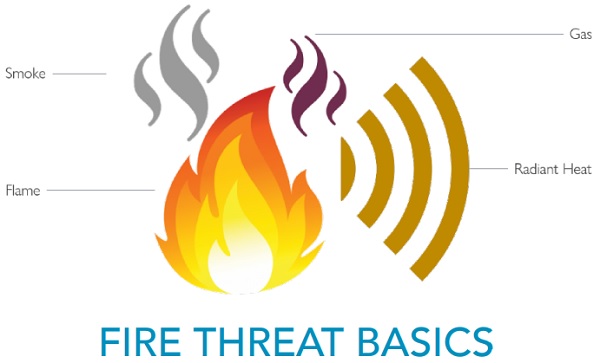
Fire-protective means the glass prevents the spread of smoke and flames within the designated rating timeframe. Traditional wired glass, glass ceramics, and special tempered glass are examples of fire-protective products. SCHOTT PYRAN® Platinum by McGrory Glass is an example of a fire-protective glass-ceramic manufactured using a proprietary process that creates a float-like finish without the need for surface polishing. It is manufactured without hazardous heavy metals commonly used as refining agents in other fire-rated glass-ceramic products, an important environmental consideration.
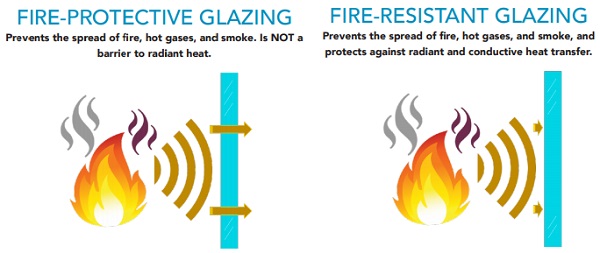
Fire-resistive means the glass offers flame and smoke defense along with blocking the transfer of radiant and conductive heat. Fire-resistive glass products, which can be completely transparent, are composed of multi-laminates with numerous layers of glass that contain intumescent interlayers or a sensitive polymer gelfilled insulating glass unit (IGU). AGC Pyrobel® by McGrory Glass is an example of a fire-resistive product that is Cradle to Cradle CertifiedTM Silver.
While both types of glazing can block smoke and flames, fireprotective can still become dangerously hot on the non-fire side of the glass from radiant heat transmission, whereas fire-resistive will remain cool. For example, if you use fire-protective glass in an evacuation route, that interior tunnel could become as hot as the flames around it.
Instead, fire-resistive glass makes more sense for egress corridors. Within an evacuation route, fire-protective glazing is most often used in small vision lites in stairwells or doors. Fire-protective applications are typically rated for 45 minutes or less, consisting of less than 25% of wall area. Fireresistive applications, by contrast, are typically rated for 60-120 minutes or higher and allow for expansive wall openings.
CODES AND TESTING
Fire-protective assemblies can interchange fire-rated components meeting the performance criteria to complete the opening, whereas fire-resistive assemblies must be tested and labeled as a single unit. This means that glazing an opening with an ASTM E119 frame and ASTM E119 glass may not be a valid rated opening unless the glass and framing have been tested together.
FIRE-RATED DOORS
Each fire-rated assembly must meet the standards of the building’s safety codes set by the National Fire Protection Association (NFPA), the International Building Code (IBC), and the International Fire Code (IFC). A door’s fire rating is governed by the fire rating of the surrounding wall, which is mandated in its building code. Fire doors must be self-latching, meaning each door must have an active latch bolt, which automatically latches when the door closes. During a fire, a properly latched door will stand up against the fire’s pressure and keep the flames contained, preventing the spread of smoke, flames, or gases.
Each product is labeled with its fire rating (20/45/60/90/180 minutes). Temperature rise in doors - calculated for the first 30 minutes - can be measured in 250, 450, and 650 degrees Fahrenheit. Whereas fire-resistive heat barriers are limited to 250 degrees Fahrenheit temperature rise for the duration of the test. An assembly’s fire rating defaults to the lowest rated component. For example, if a 60-minute rated door contains 45-minute rated glass, the door assembly is rated for 45 minutes. For more information, review IBC Chapter 7: Fire and Smoke Protection Features.
GLAZING COMBINATIONS
Fire-rated glass can be combined with other products to satisfy performance and aesthetic criteria. For example, insulating firerated glass using fire-rated spacers allows for virtually endless possibilities. Low-emission, decorative laminated, acid-etched, patterned, security laminated, one-way mirror, and other glass can be incorporated into a fire-rated system. Security performance glazing, such as attack-resistant and bullet-resistant glass, can also be used with fire-rated systems. As the only supplier with both a fabrication facility and an in-house print division, McGrory Glass can provide all of these fabrication processes under one roof.
SPECIFYING FIRE-RATED GLASS
Designing safe facilities - from schools to hospitals to criminal justice centers - begins with choosing the right mix of fire-rated and security glass to protect against fire and smoke, attacks, and weather-related disasters. Architects can confidently balance form and function when incorporating fire-rated glazing.
Do a deeper dive into functional and aesthetic requirements Ensure a fire-rated system makes the most sense. Remember that a fire-rating glazing system will do much more than protect building occupants and contents against fire, smoke, and heat. Consider its ability to visually match other glass, allow natural light in, slow a forced entry, or withstand weather events. Remember that retrofits into existing frames can limit options due to thickness tolerances. Ask important questions up front:
- Does the system need to protect against flames, smoke, and heat transfer?
- Does the opening exceed 25% of the wall area?
- Does the system need to incorporate non-rated glass?
- What areas of the building need daylighting?
- Does the design require multi-functional fire-rated glazing?
- Will the glass be retrofit into existing frames?
Work with your glass manufacturer early in the process
Early conversations can lead to strategic decision-making, and can help get the right products for your schedule and budget. McGrory’s strategic consultants will review project goals including budget, aesthetic vision, and performance requirements. They can offer fire-rated product suggestions and contribute creative problem-solving solutions. Consider these issues:
- Fire-rated glass may have a longer lead time.
- Fire-rated glass can weigh between 100-350% more than non-rated glass. You may need to increase framing member size or reinforce smaller profiles to limit deflection.
- Sustainable design objectives can be met with fire-rated glass and should be part of early conversations.
THE GLAZIER PERSPECTIVE
Technical Glass Products (TGP) also provides fire-rated glass and frames to the commercial market. TGP’s “Glaziers Guide to FireRated Glass Assemblies” offers best practices for specification and installation, arguing that “the glazier – not just the architect and material supplier – need to be well informed about the requirements.” One key point noted in the article reminds glaziers to think about hardware compatibility with the specified system.
According to AGI member glazing contractor Stephen Gilchrist, owner of GMI Contractors, “Hardware for doors should be specified and supplied by the manufacturer. GCs, architects, and owners sometimes specify the wrong hardware.” GMI has had success installing fire-rated glass and glazing systems and reports few other installation issues.
Special applications constructed for maximum daylighting and vision, such as AGC Pyrobel® 120 Vision Line by McGrory Glass, are butt-glazed and require straight-forward but exacting installation to meet the rigorous fire-rated criteria of third-party certification agencies such as UL and Intertek.
LU252 glazier Tureka Dixon adds that the fire-rated glass she has installed has been “heavy and required additional manpower” to lift and carry. As noted earlier, project teams should discuss installation requirements in advance.
CASE STUDY:
IMPACTING PATIENT OUTCOMES
Lurie Children’s Hospital | Chicago, Illinois
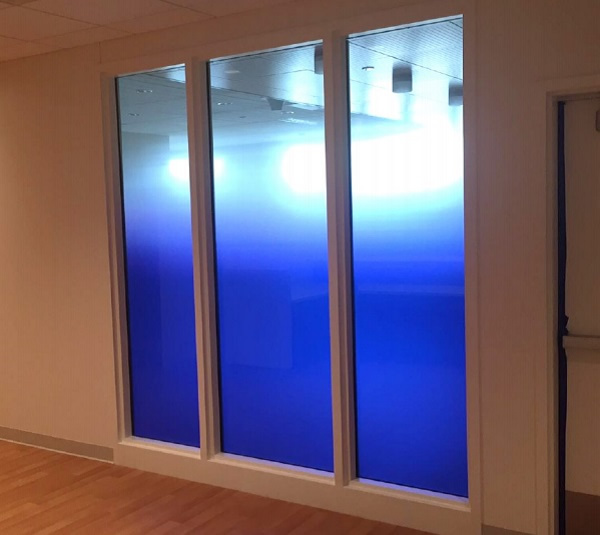
Studies show that hospital design has a huge impact on patient stress, patient and staff safety, staff effectiveness, and the quality of care. To meet patient expectations for a more welcoming and human-centric environment, Lurie Children’s Hospital wanted to include large, serene family room windows looking out into a well-trafficked corridor.
“These openings to the corridor represented both a unique challenge and opportunity for our team,” McGrory Fire-Rated Division Lead Richard Whitcombe said. “This wall separates a corridor from a family room, and has a specific, required fire-resistive rating. However, in line with current initiatives in healthcare architecture, the designer wanted to facilitate the flow of natural light, sightlines, and colorful brand cohesion throughout the space.”
The new eye-catching glass partition includes a custom gradient in the healthcare organization’s branded blue color produced by McGrory’s inhouse printing division, while still maintaining a fireresistive rating.
ADDITIONAL RESOURCES
BNP Media, publisher of Architectural Record, Building Enclosure, Walls & Ceilings, and other industry magazines, also offers ondemand webinars geared toward design professionals, including “Designing with Fire Rated Glass” sponsored by SAFTI FIRST Fire Rated Glazing Solutions and “Key Advances in Fire Rated Glazing” and “Understanding How Glazing Can Impact Safety and Fire Protection,” both sponsored by the National Glass Association.
For an excellent history of wired glass and its historic preservation: Wire Glass: History of Technology & Development | Columbia University Master of Historic Preservation thesis (May 2013)
For more about the history, usage, and types of fire-rated glass:
- An Introduction to Fire-Rated Glass | GlassonWeb.com (March 24, 2008)
- Wired Glass: Safety considerations, fire protection, product details, and more | Glass Magazine (May 26, 2020)
- Wired Glass: Still a misunderstood product | Glass Magazine (April 22, 2011)
ABOUT McGrory Glass
McGrory Glass, one of the largest independent architectural and decorative glass companies in the U.S., offers SCHOTT PYRAN® Platinum fire-protective and AGC Pyrobel® fire-resistant glass. A singlesource solutions provider, McGrory combines innovative systems and comprehensive decorative capabilities with high quality performance products. McGrory Glass has a dedicated team of firerated specialists with decades of experience in fire-rated glass and framing systems ready to help you navigate the complicated world of life-safety glazing options. For information, contact:
Richard Whitcombe | Fire-Rated Division Lead
856-579-3271 | rw@mcgrory.com
Helena A. Mutak | Director of Marketing
856-579-3292 Direct | hmutak@mcgrory.com
McGrory offers a series of virtual lunch-and-learn presentations worth 1 AIA HSW Learning Unit each, including:
- Fire-Rated Glazing: Introductory Course
- Fire-Rated Glazing: Safe, Beautiful & Environmentally Sustainable Design in the Modern Architectural Landscape
Learn more about McGrory’s complete line of fire-safe glazing here: https://mcgrory.com/glass/fire-rated-glass/
All images and graphics used in this article © McGrory Glass 2020.
About the Devil’s Details
The AGI educational series illustrates and describes common glazing challenges as a means to communicate best practices for the design and construction industry, not as a sole source for design guidance. AGI recommends design professionals consult with an AGI contractor regarding specific project challenges. AGI contractor profiles may be accessed at www.theagi.org. To share a devilish detail of your own, contact Stephanie Staub at stephanie@theagi.org.

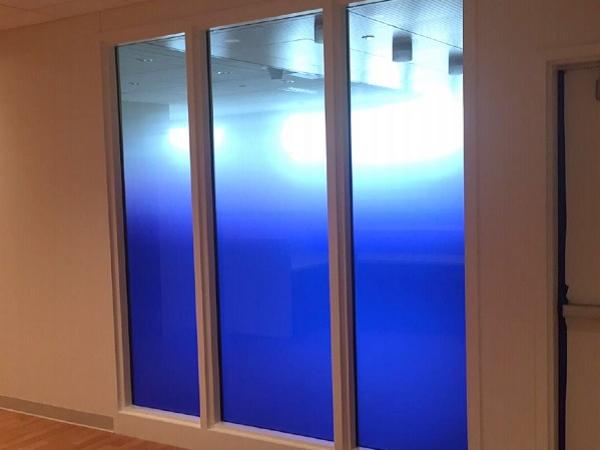

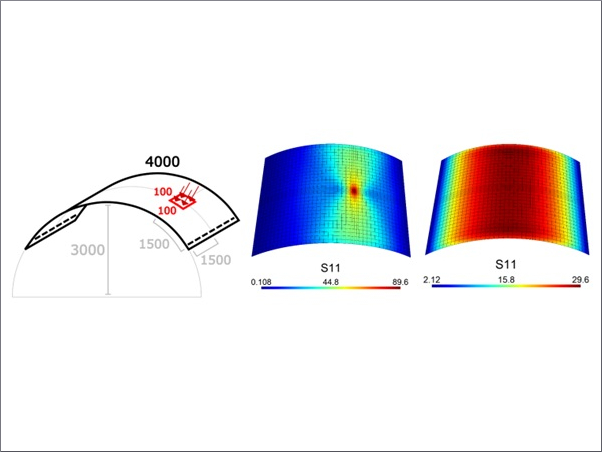

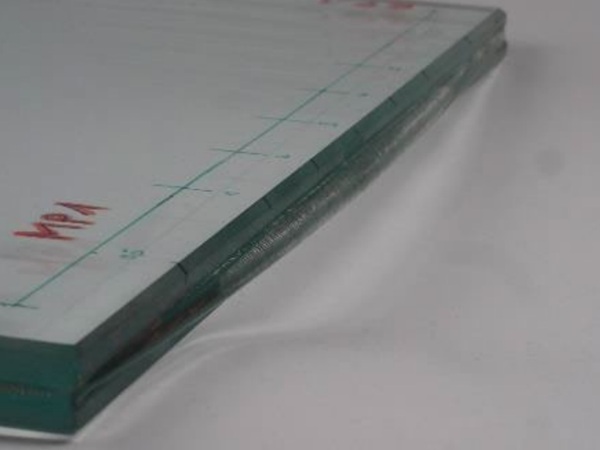








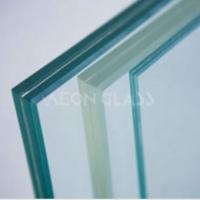
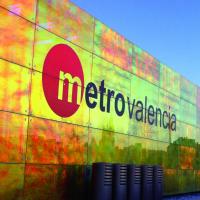
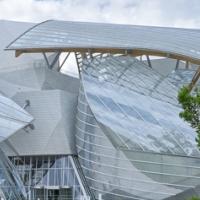
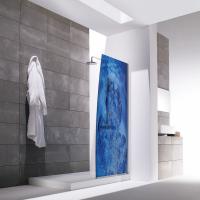
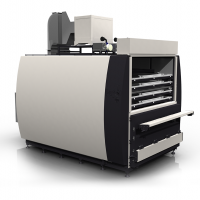
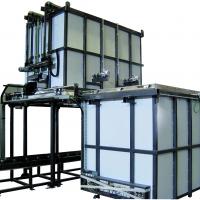
Comments
New developments also make it possible to build frames with thermal insulation. The frames can even be classified as fire-resistant using isolation techniques. Cutting-edge frames and glazing products were only the start.